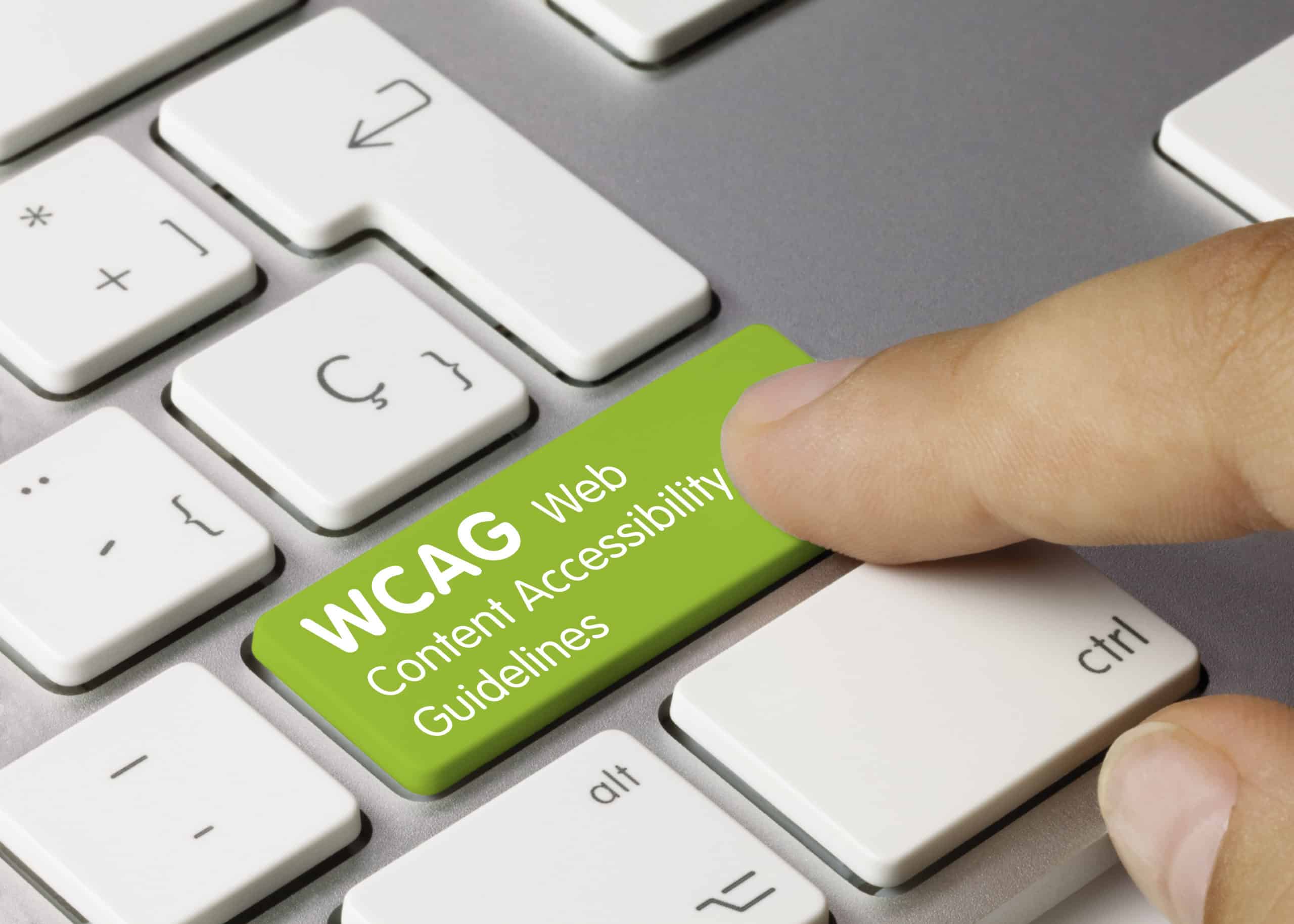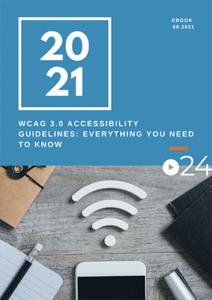The World Wide Web Consortium’s (W3C) Web Accessibility Initiative (WAI) has released two major updates…

WCAG 3.0: The Simple Glossary
Introduction to WCAG 3.0 Glossary

The recent release of the WCAG 3.0 guidelines included updates and renewed regulations that are more granular and specific. Abiding by these guidelines and their specific vocabulary is a necessary strategy to effectively accommodate neurodiversity and expand your reach to those audiences.
Thus, it is essential to understand the lexicon that it uses in order to better implement accessibility practices. This blog will give you a basic understanding of the vernacular and allow you to move forward with accessibility programs with confidence.
Conformance to WCAG 3.0
Satisfying all the requirements of the guidelines. Conformance is an important part of following the guidelines even when not making a formal Conformance Claim.
Critical Error
An accessibility problem that will stop a user from being able to complete a process. Critical errors include:
- Items that will stop a user from being able to complete the task if it exists anywhere on the view (examples: keyboard trap, audio with no pause, flashing);
- Errors that when located within a process means the process cannot be completed (example: submit button not in tab order);
- Errors that when aggregated within a view or across a process cause failure (example: a large amount of confusing, ambiguous language)
Functional Need
A statement that describes a specific gap in one’s ability, or a specific mismatch between ability and the designed environment or context.
WCAG 3.0 Guideline
High-level, plain-language content used to organize outcomes. This content can be used by all organizations to ensure compliance with WCAG 3.0.
Outcome
Result of practices that reduce or eliminate barriers that people with disabilities experience.
Success Criterion
Testable statements that compose the normative aspects of WCAG 2. The closest counterpart to success criteria in WCAG 3.0 are outcomes.
Test
Mechanism to evaluate the implementation of a method, including true/false or rating scales. In WCAG 3.0, the two main tests used are Atomic and Holistic tests.
Text Alternative
Text that is programmatically associated with non-text content or referred to from text that is programmatically associated with non-text content. To clarify, programmatically associated text is text whose location can be programmatically determined from the non-text content.
View
All content is visually and programmatically available without a substantive change.
Views vary based on the technology being tested. While these guidelines provide guidance on scoping a view, the tester will determine what constitutes a view, and describe it. Views will often vary by technology. Views typically include state permutations that are based on that view such as dialogs and alerts, but some states may deserve to be treated as separate views.
Visual Contrast
The combination of foreground and background colors along with font-weight and size that makes text readable.
WCAG 3.0 Conclusion
While WCAG 3.0 won’t officially become a required accessibility standard for a couple more years, it’s important to understand the upcoming changes so your organization isn’t scrambling at the last minute. A significant part of this is comprehending the language that is used within the guidelines. This blog is perfect for you and your organization to fully understand and implement practices that follow the regulations laid out in WCAG 3.0.
cielo24 Website Accessibility Solutions
 Our Enterprise-level accounts and Self Serve platform help companies and individuals comply with the WCAG 2.0 series, as well as the new 3.0 standards. Our solutions are built around your specific video needs and come with a he account executive, as well as opening you up to our full suite of features like 16+ foreign language translations, advanced media data, and our video wrapper.
Our Enterprise-level accounts and Self Serve platform help companies and individuals comply with the WCAG 2.0 series, as well as the new 3.0 standards. Our solutions are built around your specific video needs and come with a he account executive, as well as opening you up to our full suite of features like 16+ foreign language translations, advanced media data, and our video wrapper.
cielo24 is removing barriers to increase video marketing ROI, searchability, and compliance for all your videos!



